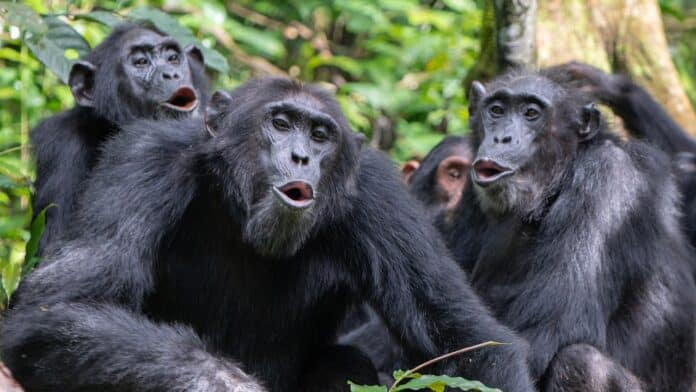Human language is a highly productive communication system that allows the creation of new meaning through the combination of existing meaning-bearing elements. The syntax can take different forms depending on the semantic relationship between the combination and the parts.
The syntax is the grouping of words into longer phrases that allows language to express an infinite variety of messages. Significant ape data is needed to reconstruct the ancestral origins of syntax, but it is currently unavailable.
The ability to combine words into more significant compositional phrases is a key feature of human language.
Chimpanzees have the ability to connect vocalizations into meaningful structures, which may be more ancient than previously thought.
Our closest living relatives, chimpanzees, are known to create a number of vocalizations to manage their social and ecological life. In certain cases, these vocalizations are combined into longer sequences. According to research from the University of Zurich (UZH), chimpanzees can understand these combinations.
Researchers managed tests on untrained chimpanzees in Uganda by carrying them out properly. They showed model snakes to chimpanzees, and they reacted more strongly to the combination of the two sounds than to “alarm-huu” or “waa-bark.”
Maël Leroux, a postdoctoral student at the Department of Comparative Language Science of UZH, who led the study, said, “Chimpanzees produce ‘alarm-huus’ when surprised and ‘waa-barks’ when potentially recruiting conspecifics during aggression or hunting, Our behavioral observations suggest that chimpanzees combine these calls when exposed to a threat where recruiting group members is advantageous, such as when encountering a snake, but until now experimental verification has been missing.”
In a study, the last author and UZH professor Simon Townsend said, “This makes sense because a threat that needs recruitment is an urgent event and suggests listening to chimpanzees really combining the meaning of the individual calls.”
The new findings have significant implications for the evolutionary roots of language’s compositional structure.
He said, “Humans and chimpanzees last shared a common ancestor approximately 6 million years ago. Our data, therefore, indicate that the capacity to combine meaningful vocalizations is potentially at least 6 million years old, if not older.”
Leroux said, “These data provide an intriguing glimpse into the evolutionary emergence of language.”
In a nutshell, it suggests that compositionality existed before language development. However, further observational and experimental study, ideally in other great ape species, will be necessary to verify this.
Journal Reference:
- Leroux, M., Schel, A. M., Wilke, etal. Call combinations and compositional processing in wild chimpanzees. Nature Communications. DOI: 10.1038/s41467-023-37816-y
